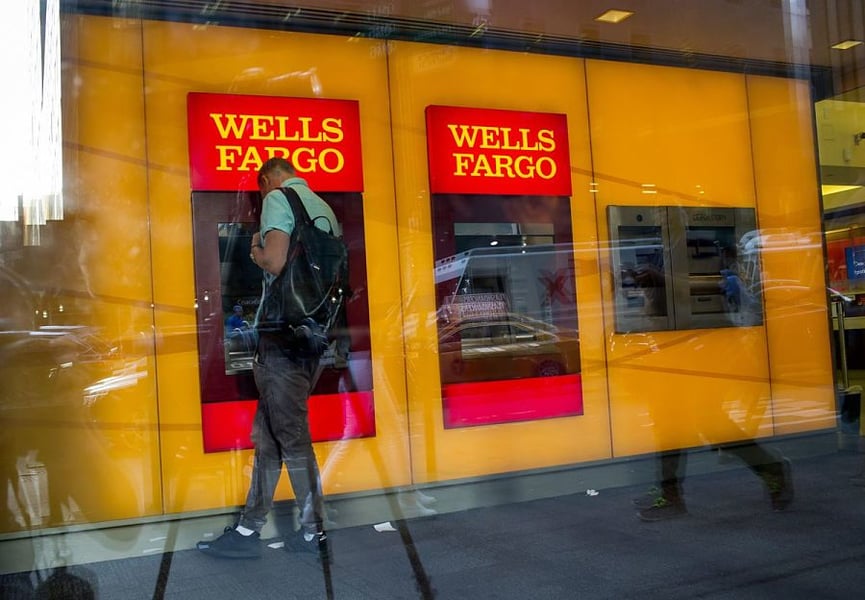

Don’t let anyone tell you regulators haven’t punished Wells Fargo & Co., or at least its shareholders.
The scandal-ridden bank has lost $220 billion in stock market value since the Federal Reserve imposed an unprecedented cap on the bank’s assets in early 2018, crimping its ability to add customers and loans. The constraints are biting harder this year as corporate clients draw down credit lines, which pushes up assets and leaves Wells Fargo even less room to seize opportunities.
Shares of the bank touched a 10-year low last week as analysts raised alarms that shrinking profits make its current dividend less sustainable. While the coronavirus pandemic has taken a toll on bank stocks across the U.S., Wells Fargo’s drop is the steepest among its main peers this year. And since the Fed imposed its cap, the bank’s market capitalization has fallen much more, valuing the firm at $96 billion by Friday’s close of trading.
A series of scandals that began erupting in 2016 prompted the Fed to limit Wells Fargo’s growth until lapses are addressed. The bank’s leaders initially said they believed they could meet the requirements of the order by the end of 2018. After regulators later expressed frustration with the pace of reform, the company installed a new chief executive, Charlie Scharf, in October. He has declined to give guidance on timing, but has cautioned that there’s still much work to do.
The bank was granted a small reprieve in April when the Fed announced it would “temporarily and narrowly” modify the restriction to let Wells Fargo expand lending to small businesses under U.S. programs intended to blunt the impact of the pandemic.
But the firm is still broadly constrained. As the economic slump spurs a “flight to safety,” many banks have soaked up a flood of deposits that they’ve used to increase assets. Wells Fargo hasn’t seen the same benefit.
A growing chorus of analysts and investors are predicting Wells Fargo will have to reduce its dividend this year. The company has offered the highest dividend yield of the largest U.S. banks in the last 12 months.
“Wells Fargo was unable to earn enough in the first quarter to cover the company’s dividend payment in the quarter, and this has raised fears that WFC may need to cut the dividend to a more sustainable level in the future,” KBW analyst Brian Kleinhanzl wrote in a note to clients last Wednesday.

Integrated Partners is adding a mother-son tandem to its network in Missouri as Kestra onboards a father-son advisor duo from UBS.

Futures indicate stocks will build on Tuesday's rally.

Cost of living still tops concerns about negative impacts on personal finances

Financial advisors remain vital allies even as DIY investing grows

A trade deal would mean significant cut in tariffs but 'it wont be zero'.
RIAs face rising regulatory pressure in 2025. Forward-looking firms are responding with embedded technology, not more paperwork.
As inheritances are set to reshape client portfolios and next-gen heirs demand digital-first experiences, firms are retooling their wealth tech stacks and succession models in real time.
